Perennials are inherently perennial plants that survive the winter. However, they tolerate cold and frost differently well.
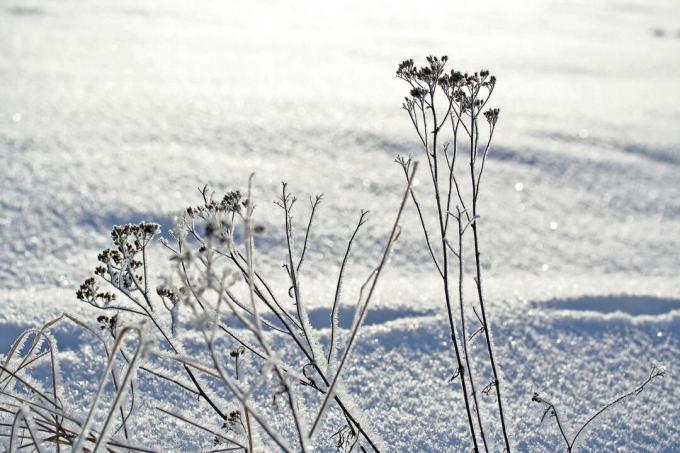
Everyone who works in the garden knows the term "perennial". But what distinguishes these from shrubs or trees and why is it that there is nothing left of the plant in winter? The perennials are herbaceous, perennial plants, whose above-ground plant parts, in contrast to trees and Shrubs are little or not at all woody, but are herbaceous and soft as a rule after each growing season die. Due to this process of "pulling back" into the ground, little is seen of them in winter. In the following we present some interesting representatives of the hardy perennials, which can safely defy the frosty temperatures.
contents
- 1. Giant Leek (Allium giganteum)
- 2. Tall goat's beard (Aruncus dioicus)
- 3. Elf Flower (Epimedium × perralchicum)
- 4. Scarlet fuchsia (Fuchsia magellanica)
- 5. Chinese anemone (Anemone hupehensis)
- 6. Tall Larkspur (Delphinium elatum)
- 7. Catnip (Nepeta × faassenii)
- 8. Bergenia (Bergenia cordifolia)
- 9. Hanging cushion bellflower (Campanula poscharskyana)
- 10. Yarrow (Achillea millefolium)
Almost all perennials are perennial and hardy, but that does not mean that they will survive any sub-zero temperatures unscathed. In order to offer a better orientation aid, the tolerance ranges of different winter hardiness zones were assigned specifically for plants. Based on this, it is very easy to see whether the perennial should be planted in milder regions or whether it can survive rough weather unscathed. The winter hardiness zones cover a very large spectrum and range from Z11 (above +4.4 °C) to Z1 (below -45 °C). Therefore, one should pay attention to possible additives in the designation "hardy". Even if winter hardiness varies slightly depending on the region, it is best to select perennials with a winter hardiness of at least Z7 (about -15 °C) or below for your garden in Germany. Below are some of these hardy perennials that also thrive in harsher climates.
1. giant leek (Allium giganteum)
The giant leek is an upright perennial with a height of up to 180 cm. A special eye-catcher are the violet, star-shaped flowers, which open from June to July. Suitable bed neighbors are, for example, various ornamental grasses.

2. Tall forest goat's beard (Aruncus dioicus)
As a sprawling, clumpy perennial, the high forest goat's beard reaches a height of up to 180 cm and therefore requires a lot of space in the perennial bed. Otherwise, the care of the robust perennial is very uncomplicated. The large panicles of flowers are yellowish-white and open from June to July.
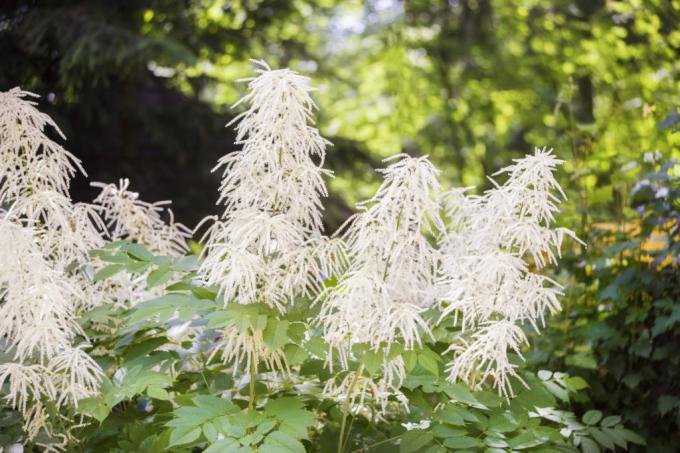
3. elf flower (epimedium × perralchicum)
The vigorous area cover is also suitable for shady beds and even as an underplanting for trees. the elf flower belongs to the barberry family (Berberidaceae) and was even voted Perennial of the Year in 2014. The winter green Perralchicum-Art is particularly robust and therefore also suitable for our latitudes. The 'Frohnleiten' variety, for example, opens its small, yellow flowers from April to May. The foliage is brownish-green in color throughout the year.

4. scarlet fuchsia (Fuchsia magellanica)
The hardy scarlet fuchsia 'Riccartonii' is a small-leaved variety with beautiful red flowers. Its flowering time is from July to October. The perennial grows rather loosely upright and reaches heights of up to 100 cm. This perennial is hardy in a sheltered location. However, it should be protected from cold temperatures with straw, leaves or fir branches.
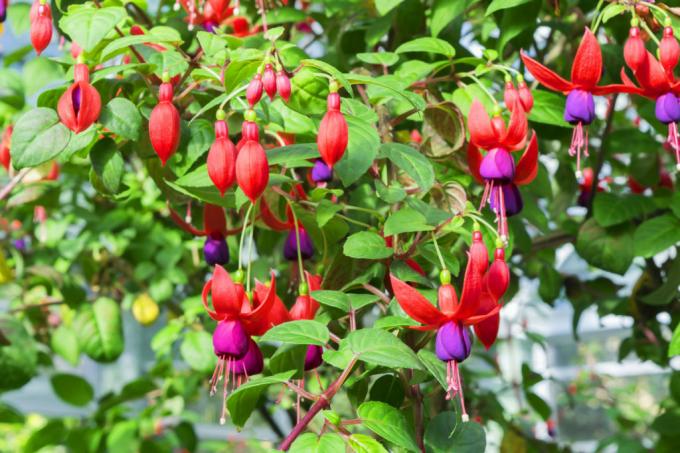
5. China autumn anemone (Anemone hupehensis)
The Chinese autumn anemone is an upright perennial with a height of about 50 to 70 cm. The 'Praecox' variety opens its pink flowers from August to October. The bowl-shaped flowers are extremely popular with insects such as bees and bumblebees. The anemone thrives best in semi-shade.

6. High delphinium (Delphinium elatum)
The majestic perennial grows strongly upright and reaches heights of up to 160 cm. The 'Finsteraarhorn' variety is particularly beautiful and it is not for nothing that it was named after the highest peak in the Bernese Alps. The deep violet-blue flower clusters of the high larkspur can still be seen from afar. The flowering period is from June to September.

7. catnip (Nepeta × faassenii)
The cushion-forming catnip should not be missing in any perennial border. It blooms dark purple from May to September and the leaves have a minty aroma. The 'Walker's Low' variety forms particularly long inflorescences and is an ideal bed neighbor for roses. In terms of care, catnip is rather undemanding and is characterized by good stability.
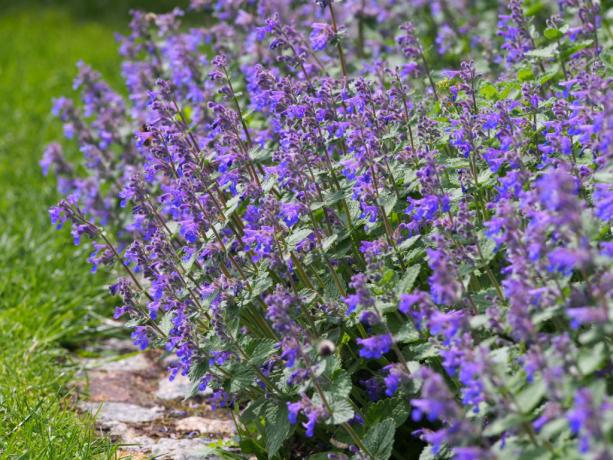
8. Bergenia (Bergenia cordifolia)
The Bergenia was voted Perennial of the Year 2017 - rightly so, we think, because the saxifrage plant (Saxifragaceae) not only impresses with beautiful foliage all year round, but is also extremely hardy. The purple flowers of the 'Glockenturm' variety appear from April to May. It is best to plant the sprawling ornamental perennial in small groups, this is how it comes into its own.
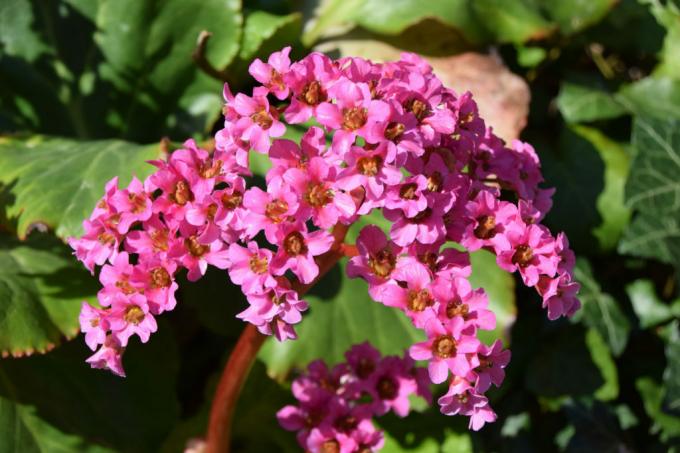
9. Hanging Pad Bellflower (Campanula poscharskyana)
The cushion-like perennial is an ideal ground cover (height up to 15 cm). The bellflower prefers dry and stony soil and is therefore ideal for the rock garden. The variety ‘E.H. Frost', for example, produces beautiful star-shaped bluish-white flowers.

10. yarrow (Achillea millefolium)
One of the best known Yarrow Varieties is certainly the ‘Lilac Beauty’. The upright perennial reaches heights of growth of up to 60 cm and delights us with delicate light to violet-pink umbel flowers from June to August. A sunny spot in an open space is good for the yarrow ideal.
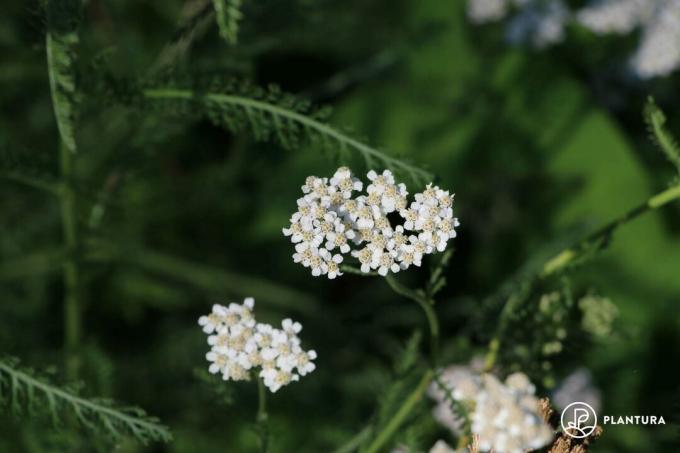
However, the plants presented represent only a fraction of all hardy perennials and were selected by us primarily because of their frequent use or attractiveness. It is nevertheless an advantage if you inquire about the winter hardiness zone in which the plants are located before you start planting, so that you can then make your selection. After all, you can easily avoid downtime due to frost damage. The best Perennials for the shade as perennialsfor the penumbra you'll find here.
Further hardy plants we have compiled them for you in our special article here.



